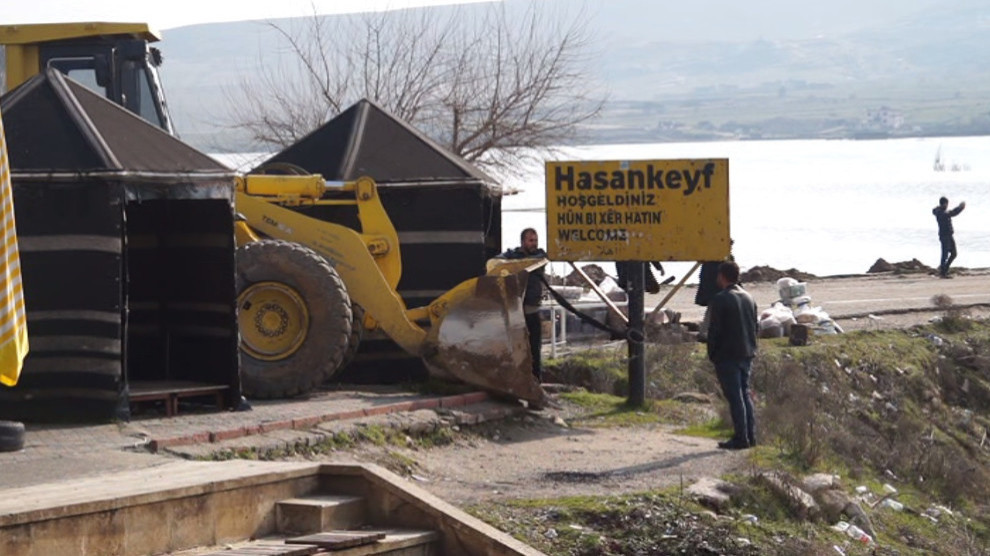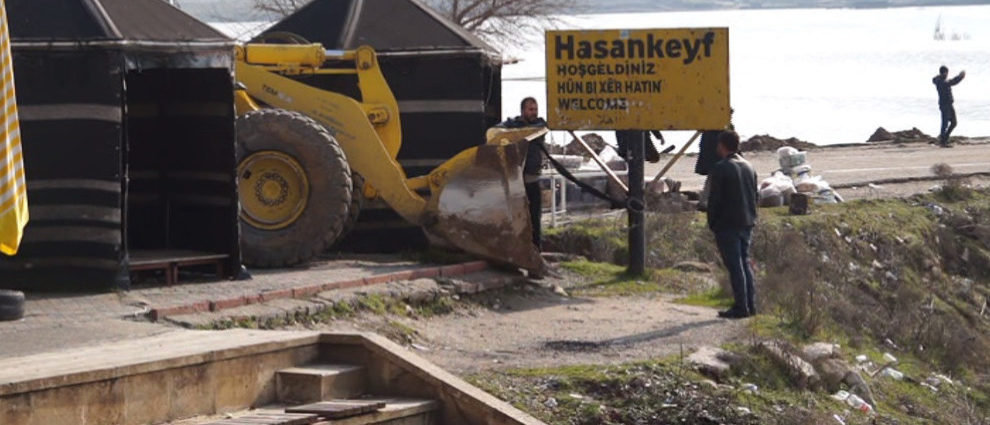Access to the 12,000-year-old settlement of Hasankeyf is now only possible with a special permit. The cultural site in Northern Kurdistan is flooded by the Ilisu dam on the Tigris. With it a unique history is lost.
The water dammed up by the Ilisu Dam rises rapidly in the historical site Hasankeyf (Kurdish: Heskîf) in the province of Batman in Northern Kurdistan. Access to the 12,000-year-old settlement is only possible with a special permit from the district governor. The bridge has been sealed off with earth, a large part is already under water.
Also the place-name sign was attempted to be torn down with an excavator. The people from Hasankeyf protested against this, and the attempt was subsequently thwarted.
Due to the last rainfalls the water level has risen strongly. At least fifty villages are already completely flooded.
Unique place in human history
The flooding of Hasankeyf began in July 2019. The cultural site, whose roots go back to the Bronze Age, is a unique place in human history: twenty Eastern and Western cultures have left their traces here. 5,500 caves, hundreds of previously discovered monuments and a fascinating interweaving with rocks and the Tigris give the site global significance. According to experts, Hasankeyf and the surrounding Tigris Valley – one of the last remaining major river ecosystems in Turkey – meet nine out of ten criteria for inscription as a UNESCO World Heritage Site and provide the basis of life for up to 100,000 people. But the Turkish government wants the historic city to be destroyed for the Ilisu hydroelectric power plant, which is designed to operate for 50 years and is one of the most controversial dam projects in the world.


